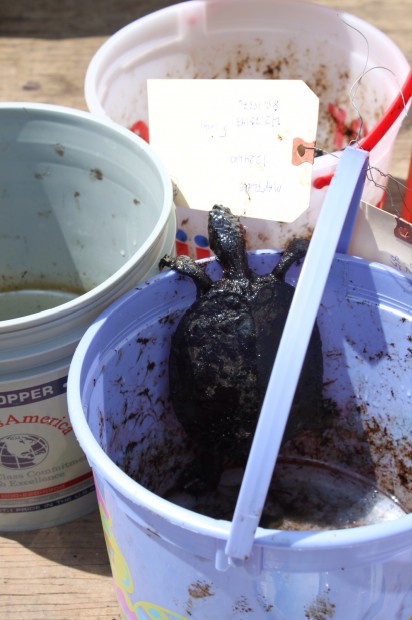We have much more to do and your continued support is needed now more than ever.
Pipeline Safety Agency Says No to Public Request for Tar Sands Pipeline Safety Measures
It would seem to follow that two of the most severe pipeline oil spill disasters in our nation’s history would garner the attention of a federal agency charged with protecting us from pipeline spills. But in response to a coalition of landowners, former and current government officials, environmental, renewable energy and sportsmen’s groups filing a petition with the U.S. Department of Transportation’s Pipeline and Hazardous Materials Safety Administration (PHMSA) requesting the agency to develop stronger safety standards to protect wildlife and communities from future spills of pernicious tar sands oil, it said no thanks.
As the tragic spills in the Kalamazoo River in Michigan and in Mayflower, Arkansas have shown, tar sands presents severe risks that are different from conventional oil, particularly after it spills. After over four years, more than a billion dollars spent, and multiple dredgings, portions of a forty mile stretch of the Kalamazoo River are still polluted. The Kalamazoo River spill killed or seriously injured many birds, mammals like beavers and muskrats, reptiles and amphibians, and other wildlife in the affected area.

Similarly, a tar sands oil spill from an aging Exxon pipeline that ruptured in the suburban community of Mayflower, Arkansas in 2013 has left a neighborhood uninhabitable. That pipeline, called the Pegasus, was reversed to be converted to tar sands use. In September, PHMSA for the first time acknowledged that pipeline reversal can cause integrity problems.
Inadequate regulations
Current pipeline regulations were issued long before tar sands oil production ramped up and do not cover the unique aspects of tar sands, including the extreme challenges it presents when it spills. Tar sands oil is a volatile mix of raw bitumen – an asphalt-like substance – diluted with gas condensates. “Diluted bitumen” is a toxic, viscous, corrosive substance with the consistency of gritty peanut butter that must be moved at much higher pressures and temperatures than conventional oil.
In a scathing 2012 report on the Kalamazoo River spill near Marshall, MI, the National Transportation Safety Board pointed blame at current regulations, calling them “weak” and “inadequate.” The NTSB study pointed to disturbing failings in the Kalamazoo spill, like the fact that Enbridge, the company that owns the pipeline, failed to notice the leak for 17 hours and pumped over 80 percent of the tar sands after the rupture had occurred. It also took days for responders to be made aware of the fact that the spilt material was tar sands.
The groups and individuals requested new standards tightening several aspects of oil transport and pipeline safety, specifically asking for measure such as:
-
Stronger safety requirements than those for conventional crude oil;
-
Industry disclosure of products carried through pipelines and their conveyance schedules;
-
Stronger industry spill response plans;
-
Shut-down requirements upon the first indication of a leak or other pipeline failure;
-
Repair of pipelines as soon as defects are discovered;
-
Transparent pipeline inspection reporting; and
-
Pipeline inspection and monitoring by independent entities unaffiliated with pipeline or energy companies;
-
A moratorium on building new or expanded tar sands pipelines until new regulations are final.
The risks of tar sands pipelines are too high
But PHMSA, an agency with little interest in transparency, listening to the public and a tendency to allow industry to police itself, relied almost entirely on a limited study by the National Academy of Sciences (NAS) that concluded that existing, largely industry studies failed to find a difference between tar sands oil and similar heavy crude oil. The study did not examine how tar sands behaves after it spills, and neither did PHSMA’s letter denying the petition for new rules.

The disasters in Michigan and Arkansas leave no doubt the risks of tar sands is too high. Federal pipeline safety regulators are putting their head in the sands when it comes to these risks. With risks like these, it’s time to say no to tar sands and invest in clean, wildlife-friendly energy choices.
![]() Tell the State Department: Do not allow expansion of the Alberta Clipper tar sands pipeline!
Tell the State Department: Do not allow expansion of the Alberta Clipper tar sands pipeline!






















